#Colony of Dahomey and Dependencies
Explore tagged Tumblr posts
Note
Oh I actually it confirm that the Yoruba were the primary victims of the Dahomey as 64% of African Americans slave ancestry is Yoruba https://www.ncbi.nlm.nih.gov/pmc/articles/PMC2812948/
Which explains why I see Central African pictures and go “You look so familiar but I don’t know why”
Also about most slaves going to SA, well the thing is Afro Latino don’t go “ WAAAAAAAAAAH! SLAVERY RUINED MY LIFE! WAAAAAAAH!” Every 5 GODDAMN seconds like African Americans do
They also don’t have the racial politics as us…but that another story
And the Louisiana thing is interesting since it was a FRENCH colony, I mean even to this day Louisiana feel so different from the rest of us.
And I been check the wiki (of course I’m going to get a better source) https://en.m.wikipedia.org/wiki/Yoruba_people
But wow look they had urbanized cities and fortress in precolonial times. Maybe we should-
Damnit they had slaves too, ugh maybe let not glorify it
I just wondering how a white chick in Hollywood that it would be good to glorify the Dahomey when people pointed out their true connection to Americans.
I’m do in my free time and these fuckers who make more than me can’t do the research
Oh right the anti white thing I might say in another anon…
Also about most slaves going to SA, well the thing is Afro Latino don’t go “ WAAAAAAAAAAH! SLAVERY RUINED MY LIFE! WAAAAAAAH!” Every 5 GODDAMN seconds like African Americans do
That and a lot of them were literally worked to death, you wanted to get bought by an American, if slavery was in your future at least, kept it going 20+ years past the US there too.
But wow look they had urbanized cities and fortress in precolonial times. Maybe we should- Damnit they had slaves too, ugh maybe let not glorify it
Everyone had slavery, if you had a war and took captives they became slaves because it's not like you could just keep them in a prison of some sort without having them earn their keep in some way and if you didn't want to just kill them or even worse let them go so they can come back and fight you again your options became limited.
You could also do this
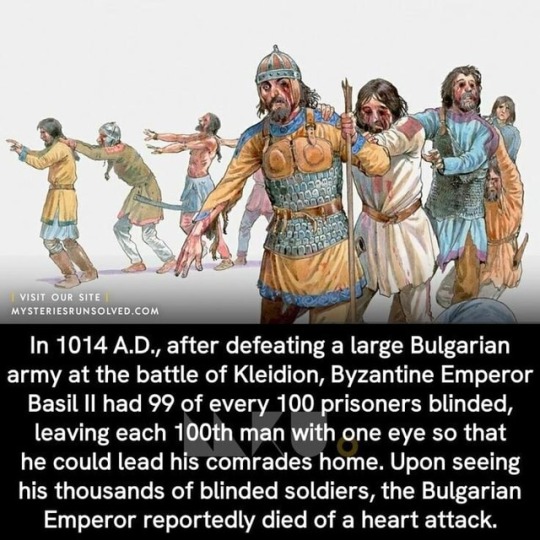
15,000 men, which this was probably easier than enslaving them Czar of Bulgaria's problem now, new Czar that is.
(Random historical tangent over)
But ya everyone had slaves, in all honesty the practice was on the verge of dying in the western world when the civil war happened. War accelerated it but it was on its way out.
Not that it should have kept going till that happened.
I just wondering how a white chick in Hollywood that it would be good to glorify the Dahomey when people pointed out their true connection to Americans.
Girl Power, they can do anything a man can do and do it while bleeding even taking collecting slaves to sell to the Europeans.
I honestly don't think she thought that far ahead, Viola Davis on the other hand.........
Really most of the cast if they had looked into it should have walked imho, but dolla dolla bills y'all.
and I look forward to the 'anti white' one, I may sit on it till tomorrow if it comes tonight tho, depending on how long it is
13 notes
·
View notes
Text

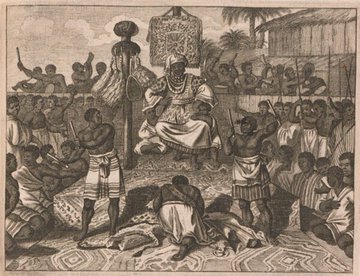
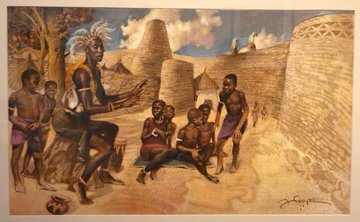
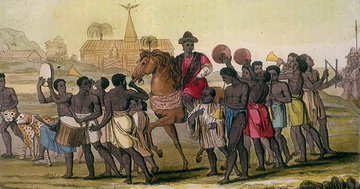
AFRICA WAS DESTROYED WHEN ARABS AND EUROPEANS FIRST STEPPED FOOT ON HER SOIL. "All of the countries named as Underdeveloped in the world are exploited by others. And underdevelopment to which the world is preoccupied is a product of capitalist, imperialist and colonial exploitation." - Walter Rodney (How Europe Underdeveloped Africa). When the Europeans came to Whydah, they found a thriving kingdom with its own institutions, political system and a network of trading relations between Dahomey and other West African kingdoms like the Benin Empire in what is modern-day Nigeria. Benin, for instance, had been trading with Dahomey since the early 17th century CE and the Ashanti kingdom in the following centuries, even before both Ashante and Dahomey became a strong polity to be reckoned with. Benin empire had before then, been trading on the West African Coast since the 11th century CE. These trade relations were shattered by first, the Portuguese, then the British and the French; with the sole intention that all African policies should no more be trading among each other but that they should all depend slavishly on Europe. To this end, Europe was most successful and the effects can still be felt today. So much so that some African countries today, imports toothpicks from Europe...and toothpick is the simplest thing, anyone can make. The Europeans were welcomed with traditional African hospitality, because according to Historian Dr John Henrik Clarke, "no one would have imagined that the welcomed guests will enslave the man of the house and the woman who cooked the meal." No one would have, indeed, imagined that. Another thing the African kings did not know was that the European trading(and later looting and plundering) corporation had an active army that was more than that of some countries. For example, the British East Indian trading corporation under Colin Mackenzie in the 1800s, that took over India(especially the kingdom of Virjayanangra in southern India) had such an army. The Dutch East Indian Company had such an army too. One of the successful transactions of such a trading corporation was when the entity became northern protectorates and southern protectorates of the British along the Niger River (which was later amalgamated by the British in 1914 CE to form Nigeria after a series of wars and manipulations), was bought by the British from the Royal Niger company for an amount of about 850 hundred pounds, some sources indicated the amount to have been in thousands of pounds. No African was part of this transaction. And in this way, it was like a 'mafia don who had taken over a territory, selling what wasn't his to another mafia don.' The British(descendants of the European barbarian tribe, the Angles-Saxons) claimed this territory as their own property, just as the French(descendants of the European barbarian tribe known as the Franks) took over Dahomey in 1894 CE. This had come at a huge price for the Africans. First, the visitors were allowed room in the coastal areas and they brought in an invisible enemy; alien diseases like gonorrhoea, syphilis, smallpox and other germs causing ailments that the Africans were not immune to. Next was slavery which was followed closely by colonialism that shattered African ancient polities to this very day. And why Europeans were busy with this 'enterprise,' Arabs were busy in the Sahel, North Africa and East Africa, placing a 'knife on everything that had held the societies together, even before there was a Europe or an Arab in existence. This knife was Mohammedanism or Islam, and it has confused the Africans to this very day. (C: THE HISTORY OF AFRICA MAGAZINE '22) #Africa
6 notes
·
View notes
Photo








Originally the Kingdom of Benin, the area of the current Republic of Benin was controlled by the French, at least in part, beginning in 1872. It went through being a colony and part of French West Africa as French Dahomey, to independence as the Republic of Dahomey (1960), to being a Marxist-Leninist state as the People’s Republic of Benin (1975), to the current status as the Republic of Benin (1991). And before all that [you might note that the capital is Porto-Novo - not very French and not very Yoruba or Fon (two of the predominant indigenous languages) either], the Portuguese based some of their slave trade out of that coast of the Gulf of Guinea (or the Slave Coast, as it was called).
Stamp details: Top left: Issued in: 1913 From: Porto-Novo, French Dahomey MC #42
Top right: Issued on: September 20, 1961 From: Porto-Novo, Republic of Dahomey MC #187
Middle stamps: Issued on: April 30, 1976 From: Porto-Novo, People’s Republic of Benin MC #43-45
Stamps on bottom: Issued on: June 14, 2010 From: Porto-Novo, Republic of Benin MC #1645-1647
Recognized as a sovereign state by the UN: Yes (since September 20, 1960) Official name: Republic of Benin; République du Bénin Member of the Universal Postal Union: Yes (since April 27, 1961)
#République du Bénin#Republic of Benin#Benin#Bénin#Dahomey#République du Dahomey#Republic of Dahomey#Colony of Dahomey and Dependencies#Colonie du Dahomey et dépendances#French Dahomey#Afrique occidentale française#French West Africa#stamps#philately#december 3#République populaire du Bénin#People's Republic of Benin#Orílẹ̀-èdè Olómìnira ilẹ̀ Benin#Kingdom of Dahomey
4 notes
·
View notes
Photo
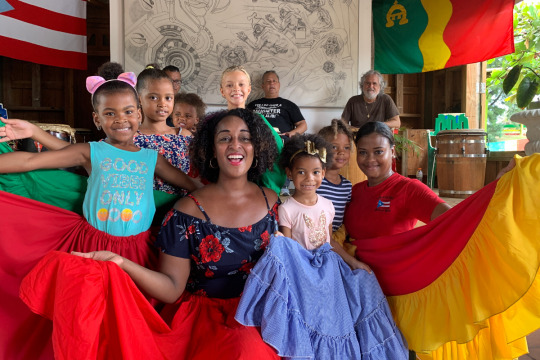
First Africans in Puerto Rico
Slave transport in Africa, depicted in a 19th-century engraving
When Ponce de León and the Spaniards arrived on the island of Borikén (Puerto Rico), they were greeted by the Cacique Agüeybaná, the supreme leader of the peaceful Taíno tribes on the island. Agüeybaná helped to maintain the peace between the Taíno and the Spaniards. According to historian Ricardo Alegria, in 1509 Juan Garrido was the first free African man to set foot on the island; he was a conquistador who was part of Juan Ponce de León's entourage. Garrido was born on the West African coast, the son of an African king. In 1508, he joined Juan Ponce de León to explore Puerto Rico and prospect for gold. In 1511, he fought under Ponce de León to repress the Carib and the Taíno, who had joined forces in Puerto Rico in a great revolt against the Spaniards.Garrido next joined Hernán Cortés in the Spanish conquest of Mexico. Another free black man who accompanied de León was Pedro Mejías. Mejías married a Taíno woman chief (a cacica), by the name of Yuisa. Yuisa was baptized as Catholic so that she could marry Mejías. She was given the Christian name of Luisa (the town Loíza, Puerto Rico was named for her.)
The peace between the Spanish and the Taíno was short-lived. The Spanish took advantage of the Taínos' good faith and enslaved them, forcing them to work in the gold mines and in the construction of forts. Many Taíno died, particularly due to epidemics of smallpox, to which they had no immunity. Other Taínos committed suicide or left the island after the failed Taíno revolt of 1511.

Friar Bartolomé de las Casas, who had accompanied Ponce de León, was outraged at the Spanish treatment of the Taíno. In 1512 he protested at the council of Burgos at the Spanish Court. He fought for the freedom of the natives and was able to secure their rights. The Spanish colonists, fearing the loss of their labor force, also protested before the courts. They complained that they needed manpower to work in the mines, build forts, and supply labor for the thriving sugar cane plantations. As an alternative, Las Casas suggested the importation and use of African slaves. In 1517, the Spanish Crown permitted its subjects to import twelve slaves each, thereby beginning the slave trade in their colonies.
According to historian Luis M. Diaz, the largest contingent of African slaves came from the areas of the present-day Gold Coast, Nigeria, and Dahomey, and the region known as the area of Guineas, together known as the Slave Coast. The vast majority were Yorubas and Igbos, ethnic groups from Nigeria, and Bantus from the Guineas. The number of slaves in Puerto Rico rose from 1,500 in 1530 to 15,000 by 1555. The slaves were stamped with a hot iron on the forehead, a branding which meant that they were brought to the country legally and prevented their kidnapping.
African slaves were sent to work in the gold mines to replace the Taíno, or to work in the fields in the island's ginger and sugar industries. They were allowed to live with their families in a bohio (hut) on the master's land, and were given a patch of land where they could plant and grow vegetables and fruits. Africans had little or no opportunity for advancement and faced discrimination from the Spaniards. Slaves were educated by their masters and soon learned to speak the master's language, educating their own children in the new language. They enriched the "Puerto Rican Spanish" language by adding words of their own. The Spaniards considered the Africans superior to the Taíno, since the latter were unwilling to assimilate. The slaves, in contrast, had little choice but to adapt to their lives. Many converted (at least nominally) to Christianity; they were baptized by the Catholic Church and were given the surnames of their masters. Many slaves were subject to harsh treatment; and women were subject to sexual abuse because of the power relationships. The majority of the Conquistadors and farmers who settled the island had arrived without women; many of them intermarried with the Africans or Taínos. Their mixed-race descendants formed the first generations of the early Puerto Rican population.
In 1527, the first major slave rebellion occurred in Puerto Rico, as dozen of slaves fought against the colonists in a brief revolt.The few slaves who escaped retreated to the mountains, where they resided as maroons with surviving Taínos. During the following centuries, by 1873 slaves had carried out more than twenty revolts. Some were of great political importance, such as the Ponce and Vega Baja conspiracies.
By 1570, the colonists found that the gold mines were depleted. After gold mining ended on the island, the Spanish Crown bypassed Puerto Rico by moving the western shipping routes to the north. The island became primarily a garrison for those ships that would pass on their way to or from richer colonies. The cultivation of crops such as tobacco, cotton, cocoa, and ginger became the cornerstone of the economy. With the scale of Puerto Rico's economy reduced, colonial families tended to farm these crops themselves, and the demand for slaves was reduced.
With rising demand for sugar on the international market, major planters increased their cultivation and processing of sugar cane, which was labor-intensive. Sugar plantations supplanted mining as Puerto Rico's main industry and kept demand high for African slavery. Spain promoted sugar cane development by granting loans and tax exemptions to the owners of the plantations. They were also given permits to participate in the African slave trade.[10]
To attract more workers, in 1664 Spain offered freedom and land to African-descended people from non-Spanish colonies, such as Jamaica and Saint-Domingue (later Haiti). Most of the free people of color who were able to immigrate were of mixed-race, with African and European ancestry (typically either British or French paternal ancestry, depending on the colony.) The immigrants provided a population base to support the Puerto Rican garrison and its forts. Freedmen who settled the western and southern parts of the island soon adopted the ways and customs of the Spaniards. Some joined the local militia, which fought against the British in the many British attempts to invade the island. The escaped slaves and the freedmen who emigrated from the West Indies used their former master's surnames, which were typically either English or French. In the 21st century, some ethnic African Puerto Ricans still carry non-Spanish surnames, proof of their descent from these immigrants.
After 1784, Spain suspended the use of hot branding the slave's forehead for identification. In addition, it provided ways by which slaves could obtain freedom: A slave could be freed by his master in a church or outside it, before a judge, by testament or letter. A slave could be freed against his master's will by denouncing a forced rape, by denouncing a counterfeiter, by discovering disloyalty against the king, and by denouncing murder against his master. Any slave who received part of his master's estate in his master's will was automatically freed (these bequests were sometimes made to the master's mixed-race slave children, as well as to other slaves for service.) If a slave was made a guardian to his master's children, he was freed. If slave parents in Hispanic America had ten children, the whole family was freed.
Royal Decree of Graces of 1789
The Royal Decree of Graces of 1789 which set the rules pertaining to the Slaves in Puerto Rico and the Caribbean
In 1789, the Spanish Crown issued the "Royal Decree of Graces of 1789", which set new rules related to the slave trade and added restrictions to the granting of freedman status. The decree granted its subjects the right to purchase slaves and to participate in the flourishing slave trade in the Caribbean. Later that year a new slave code, also known as El Código Negro (The Black Code), was introduced.
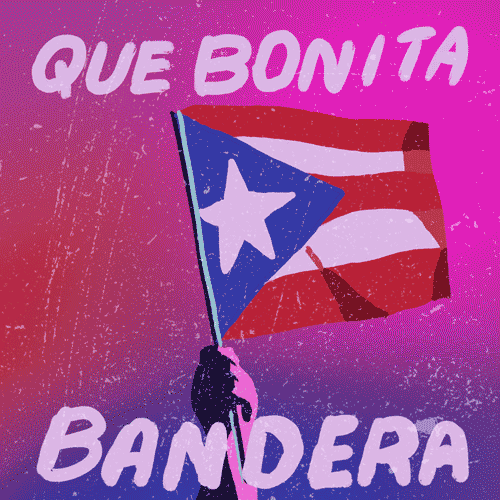
Under "El Código Negro," a slave could buy his freedom, in the event that his master was willing to sell, by paying the price sought. Slaves were allowed to earn money during their spare time by working as shoemakers, cleaning clothes, or selling the produce they grew on their own plots of land. Slaves were able to pay for their freedom by installments. They pay in installments for the freedom of their newborn child, not yet baptized, at a cost of half the going price for a baptized child. Many of these freedmen started settlements in the areas which became known as Cangrejos (Santurce), Carolina, Canóvanas, Loíza, and Luquillo. Some became slave owners themselves.
The native-born Puerto Ricans (criollos) who wanted to serve in the regular Spanish army petitioned the Spanish Crown for that right. In 1741, the Spanish government established the Regimiento Fijo de Puerto Rico. Many of the former slaves, now freedmen, joined either the Fijo or the local civil militia. Puerto Ricans of African ancestry played an instrumental role in the defeat of Sir Ralph Abercromby in the British invasion of Puerto Rico in 1797.
Despite these paths to freedom, from 1790 onwards, the number of slaves more than doubled in Puerto Rico as a result of the dramatic expansion of the sugar industry in the island. Every aspect of sugar cultivation, harvesting and processing was arduous and harsh. Many slaves died on the sugar plantations
#kemetic dreams#carolina hurricanes#african#africans#igbo#yoruba#puerto rico#criollos#slave owners#british#abercromby#afro puerto rican#afro ricans
461 notes
·
View notes
Note
Hey Alex, I'm the guy who asked about Sanse! I understand what you mean, my interest in Haitian Vodou has largely been because as I understand it ultimately Sanse/21 Divisiones have their origins in Haiti, albeit not of the Asson lineage. I have heard that lwa like Papa Candelo, Filomena etc. are served in parts of northern Haiti and the borderlands in tcha-tcha houses and so I figured pursuing that would be best. But it seems like there aren't that many non-Dominican tcha-tcha houses stateside.
Hey again Alex, sorry for you bothering you. The character count limited what I wanted to say. I know that since the asson lineage has spread in the DR, some people are serving Dominican lwa with the asson, with kreyol songs for Belie and other Dominican lwa. It's what peaked my interest of whether it'd be possible or not in a Haitian house.
Hi there,
So, the borders on the island are both meaningless and meaningful in the religion and in the cultures that are on the island. I don’t think it’s quite accurate to say that 21 Divisiones or Sanse descends from a Haitian practice, because that privileges a Haitian practice where it doesn’t need to be privileged and kind of ignores the important differences between cultures, practices, and spirits.
The tcha-tcha lineage is an island practice that has branched separately based on borders; it predates the asson lineage and has taken on different types of rootedness in each country. In the Dominican Republic, 21 Divisiones is the primary indigenous religious practice and is heavily influenced by Spanish colonial rule, Taino indigenous religion, and European spiritualism (Kardecian thought that evolved into mesa blanca in many Caribbean countries).
In Haiti, the tcha-tcha lineage is very much tied to family and place in that it is largely open only to people who are of a direct blood relation to the lakou or who may live in the lakou, and is most prevalent in the more rural areas of Haiti. Since those lineages are so tied to the lakou, they aren’t really present outside of Haiti. Much of the development of the asson in the last 200 years has been around the internal diaspora in Haiti in that the asson is not dependent on lakou or blood relations, which aided Haitians who had no family left or no access to a lakou. Haiti has never really had the Kardecian-mesa blanca aspect; instead, various lineages have taken on various ‘flavors’ (for lack of a better word) of what could be called African spiritualism. There are fran Dahomey lineages, fran Kongo, fran Nago, and more, and they all reflect the particular ‘flavor’ of that region in Haiti in all different regions of Haiti.
So, tcha-tcha is all one root on the island that branched out. It wouldn’t surprise me to hear that Dominican spirits like Candelo and Filomena crossed the border, particularly in the north where the border can be really permeable.
The asson is definitely used in the DR and I know quite a few Dominican folks who practice Haitian Vodou and have a lineage that has roots in Haiti at some point. I’ve seen Dominicans who maintain tables for both Haitian and Dominican spirits and may blend, but that doesn’t tend to happen in Haiti.
This is place where the border and the concept of the border becomes really important. Part of the branching off of Haitian Vodou is the revolution that set the enslaved Africans who would become Haitians free. It was a bargain between Haitians and spirits who sprang up directly from the ground, and it’s a huge, HUGE part of national identity in Haiti...even for Haitians who don’t practice...so it would be weird to meld other things in that are not Haitian, particularly in parts of Haiti that are really not in that wibbly-wobbly border zone.
And, there is also the overarching political implications of the border. The Dominican Republic has not treated Haiti well for quite a long time. Folks talk about how the Dajabón river is a river of blood, for the massacre of at least 15,000 Haitians at the hands of the Dominican government in 1937 (the Parsley Massacre). The DR has undertaken aggressive deportations of folks deemed not to look Dominican (which really reads out to darker-skinned Haitians, some of who have lived there for their whole lives) that still continue even now. It’s a political division that has had a lot of real-life pain with it, and that can affect transmission and relocation of religious information. There are some Haitians who feel very strongly about the inclusion of Dominicans in Haitian Vodou (more strongly than any other outsiders) because of the cultural memory and sometimes reality of the difficulties embodied in those differences.
Sanse is really something else entirely, and doesn’t have a lot to do with Haiti or the island. Sanse is very heavily born from the Taino folks who were originally on the island who were contacted, as legends dictate, by free Africans, who were the first Africans on the island, mixed with Kardecian mesa blanca. The inclusion of the lwa in Sanse is still quite new; a lot of the older texts that describe indigenous Puerto Rican practices aren’t inclusive of that. It’s a result of diaspora of practice, which is also in place in Cuba, as the lwa arrived there with Haitian immigrants and refugees, and that has grown into something uniquely Cuban.
In contrast, most of the Taino on Santo Domingo had either died or fled to the mountains by the time the French colonizers began bringing kidnapped Africans to the island to their side of the mountain, as it were. Maroon colonies were mixed colonies between surviving Taino and escaped Africans, and that definitely has influences on Haitian Vodou, albeit somewhat subtly.
So, tl:dr: tcha-tcha has developed very differently in each country on the island; it is the main Dominican practice, and one of the lineages on the Haitian side, although it is often more rural and family-distinct than 21 Divisiones might be on the Dominican side.
I hope this helped--let me know if you have more questions!
14 notes
·
View notes
Text
Displaced Peoples and Dance
Displaced peoples are a symptom of threats at home. These threats could be diseases, invaders, greedy merchants, massive uprisings, etc. Some displaced peoples moved voluntarily, and some others were forcibly moved. Salsa has always been the story of displaced peoples that were forcibly moved: slaves. The New World’s Spanish colony in Cuba depended heavily on cheap labor. The natives of those colonies were not an option thanks to guns, germs, and steel decimating their populations in under a century. Tobacco and sugar made the colony of Cuba valuable, but they also increased the demand for labor. Spain took their wealth and bought slaves off the coast of Africa. These slaves were forcibly moved and subjected brutal treatment. However, their culture did not die, but it transformed into something full of diversity.
Most of the slaves came from western Africa, captured by the local powers from their homes in Dahomey, the Congo, etc. They brought their unique dances, customs, gods, and rituals across the Atlantic. Time and time again, they were told that their culture was wrong and heretical. This story hits close to home for many immigrant families, including my own. My Hungarian side was never told this in America, but my Chinese half faced this for decades. However, their cultures didn’t die out. They changed instead. Their gods transformed into the belief systems of Voodoo and Santeria. The gods of Santeria were also worshipped as Christian Saints. Their polycentric and improvisational dances became one of the foundations for Salsa. These customs changed to become acceptable to Christian societies much like Yule or Eostre of Germanic fame. These holidays adopted enough Christian characteristics to become the foundations of Christmas and Easter. African cultures responded to colonialism not by assimilating, but by changing.
The peoples of the Cuba mixed thanks to colonialism. The Taino and Guanahateby natives mated with African slaves and Spanish colonizers became mestizos and mulattos. Their cultures merged as well, leading to much of the Cuban culture that is seen today. There is a remarkable amount of African culture that survives in Cuba today. Drums and movements of the hip and shoulder are extremely common in Cuban music and that is because African culture is alive and well in Cuba. The religious solo dances of Africa merged with Spanish dance to become the boisterous, polycentric Latin dances that many are familiar with.
Many cultures were displaced by Spanish colonialism from the fifteenth to the nineteenth centuries. Some were decimated by guns, germs, and steel, leaving behind few things besides their DNA. Some moved to the colonies and became the upper echelons of society. Other cultures were brought over the Atlantic as cheap labor to work the vast fields of cash crops. The culture at the top dictated the rules under which the others operated, and the most important rules were that the cultures had to incorporate Christianity and not initiate major revolts against Spanish authority. The first rule survives to this day while the other was broken again and again until independence was made official at the turn of the century. Africans did not survive by assimilating into a Spanish melting pot. They instead mixed with their surroundings to create a Latin fruit salad of music, dance, and religion. These readings fascinate me not just because they showed how displaced peoples functioned far from home. They fascinate me because they described a phenomenon that is just as easy for me to see at home as it is to see in history: cultures mixing far from home to become something cool.
3 notes
·
View notes
Text
I have a few things to say...
Hey everyone,
So it seems that I have made some enemies/people very upset when I posted a comment about the differences between Hoodoo and Voodoo. So I just have a few things I would like to say in my defense and then I plan on leaving this topic alone simply because I really do not care enough to keep fighting.
1. Voodoo and Hoodoo are considered two different things. It seems like everyone is bunching them up together and that is just simply NOT the case. Voodoo originated in the West Indies country of Haiti during the French Colonial Period, and it is still widely practiced in Haiti today. The foundations of Voodoo are the tribal religions of West Africa, brought to Haiti by slaves in the seventeenth century. They were mainly captured from the kingdom of Dahomey, which occupied parts of today's Togo, Benin and Nigeria. It is a true religion and is something that I have never (nor will I ever) tried to experience simply because it is not mine. It is something that is very much considered a CLOSED religion.
2. Voodoo today has been broken into three main “classes” (I use the term class very loosely here to help break apart the three styles) simply because each “class” has their own twist to this religious practice. The classes: West African Vodun, Haitian Vodou & the more “modern” Louisiana Voodoo. All connect to each other in different ways so it is acceptable to more or less mix and match bits and pieces from each “class”. (I won’t go into detail about each one simply because I don’t want to get the information wrong. Plus this is the digital age. Look them up yourself if you would like to.)
3. Hoodoo is a traditional African American folk spirituality that developed from a number of West African spiritual traditions and beliefs. Just like Voodoo there are “classes” as well. The more traditional that very much works with the West African spiritual traditions and the more “Americanized/European” version that mixes in other culture’s folk lore. This is listed as an Open practice because it is just a blend of traditions.
4. Hoodoo was a very common practice among slaves which is why most get this confused with Voodoo. As time went on, Hoodoo started mixing in bits and pieces from other countries folk lore and traditions. The Hoodoo practices that are done today are mainly of African folkloric practices and beliefs with a significant blend of American Indian botanical knowledge and European folklore. It is in no way linked to any particular form of theology, and it can be adapted into numerous forms of outward religious worship. Although it is not a religion, there are elements of African and European religions at the core of hoodoo beliefs. Teachings and rituals are passed down from one practitioner to another—there are no designated priests or priestesses and there are no divisions between initiates and laity. Rituals vary depending on the individual performing them; there is no strict approach that one must adhere to. Today, hoodoo is mainly practiced in the Southern United States, and most people who practice hoodoo are Protestant Christians.
5. I have been called some things by a certain user here on tumblr and it seems that I have been blocked from talking to them. So I want to say a few things to this user here. I have never practiced either Hoodoo or Voodoo simply because I do not feel like it is in my place. Both are very interesting to me and I love talking to those (in a peaceful and respectable manner) who do practice so I can learn more. I never once wanted to “white wash” either of them. I have more respect for both practices than you think I do. I was not ignoring “information from black people” as you put it, but just trying to make sure those who were reblogging your post understand that there are differences. It seems like I may have misread your original post and I am very sorry that I have upset you this much. Also, while you claim it is “impossible” for me to practice Hoodoo I just want to let you know that you are wrong. I can practice if I felt the strong enough connection to the spirits. I choose not to practice because I have a strong connection to another set of religious practices. Once again I am sorry for upsetting you and the others that have bashed me and have gone as far to send me hate mail (which I won’t post because that just starts too much drama here). It was never my intention.
And that is all I have to say. If you would like to take up something from this post please either send me a note or an ask. At this point I am done trying to “fight” with people on here about this. It is just not something that is 1) worth my time and 2) is pointless to me. I have never tried to “white wash” anyone’s religion and I won’t stand for having my name be put under that category now. I have the upmost respect for all religions in this world. I find them all very fascinating and would love to talk to those who practice different religions in a respectful manner. Theology is an interest of mine. I love to study and research different religions, but to read about them and to claim that I practice them are two very different things and I understand that.
So if you can talk about your religious beliefs in a calm manner please message me!!(Being excited is totally okay but please no name calling. Give me the respect that I will give to you.)
- One-of-the-birds (aka Caroline)
#voodoo vs hoodoo#tumblr drama#hoodoo#voodoo#theology#i'm sorry to have upset people here#or in both communities
10 notes
·
View notes